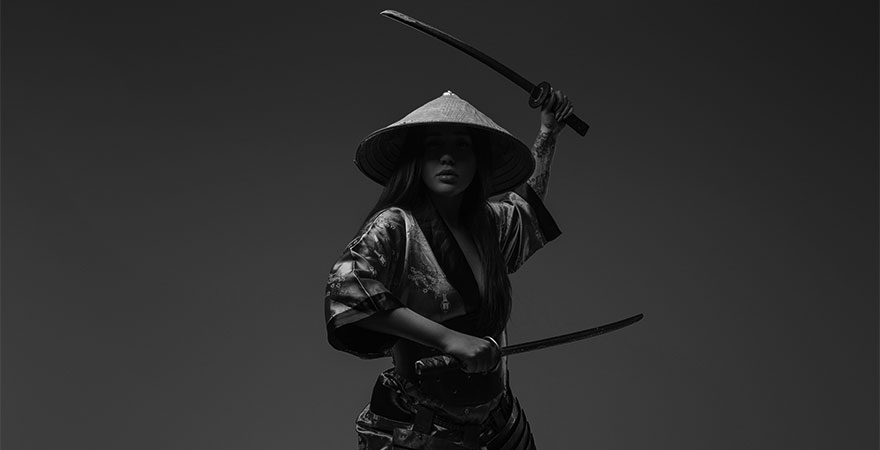A Brief History Of Katana The Samurai Swords
The sword ruled the battlefield before firearms took over. And, of all the shining blades in history, from the saber to the broadsword, feudal Japan’s katana is by far the most iconic.
The term katana was initially used to designate a sword during the Kamakura era (1185-1333), although swords have been made in Japan for over two centuries.
Japanese swords were initially simple variants of Chinese swords with straight, double-edged iron blades.
It was during the early Heian period (about 700 CE) that the first original Japanese swords regarded as the precursors of the modern katana began to appear.
Until the Edo period (1603-1868), katana were primarily used by the samurai.
The evolving nature of close-combat warfare significantly contributed to the katana’s rising popularity among samurai. The faster draw of this blade was ideally suited to combat where quick response times were critical to success.
The katana was worn with the sharpened edge facing up, thrust through a belt-like sash (obi). At this position, the Samurai could quickly draw it and cut their enemies in a single move.
Near the end of the Edo period and the beginning of the Meiji period, Japan began rapid industrialization and Westernization.
The samurai era ended in 1868, and Western clothes and armaments replaced samurai armor and swords for the next four decades.
At the same time, the katana’s use in everyday Japanese life ended with the Haitrei (sword prohibition) Edict of 1876, which authorized only police and military officers to carry them.
Many swordsmiths were forced to close their shops, resulting in the near extinction of katana swordsmithing.
The Japanese sword use then revived throughout the Showa Period and into the Second World War.
After the second world war, there was another prohibition on the manufacture and possession of these swords.
In 1960, the Society for the Preservation of the Japanese Sword emerged, assisting in reviving historic ways for producing the tamahagane steel required to forge authentic katanas.
Today, katanas must be crafted the same way as 1,000 years ago by a licensed swordsmith.
How was the katana made?
The blade was made of high-quality steel and was folded multiple times to give a layered impression. The handle was usually made of wood and wrapped in braided thread.
The making of the katana was a highly skilled and labor-intensive craft with numerous phases that include:
Preparations
To make the katana, you need high-carbon steel known as tamahagane. The swordsmith heated iron sand and charcoal in a clay furnace to generate crude steel. The raw steel was then hammered, folded, and welded repeatedly to remove impurities and form a layered structure in the steel.
A katana’s handle was often constructed of hardwood, such as Japanese oak or cherry wood. To begin preparing the wood, it was chopped into the proper shape and size. The wood’s surface was then sanded and polished for a smooth finish.
The swordsmith then prepared the various fittings, such as guard (tsuba) and pommel (kashira). These materials were often cast or forged into the correct shape before being polished to achieve a smooth surface.
Tanren
This is the process of repeatedly heating and hammering the blade to refine the steel and develop a layered structure in the blade.
The process involved heating the blade to a high temperature before smashing it with a hefty hammer to shape and compress the steel.
The tanner strengthened the blade and produced the characteristic grain pattern known as hada that determined the sword’s quality and authenticity.
Tsukurikomi & Sunobe
This is the process of combining hard steel for the outside layer and mild steel for the core. The result is the sunobe – a blank sword.
The swordsmith then went through the process of Hizukuri, Arashiag, Tsuchioki, Yaki-ire, Shiage, Hi & Horimono, and finally, Nakago & Maikiri, the finishing and signing of the sword.
On average, it takes around 3 months to create a sword, and there are approximately 300 registered swordsmiths in Japan.
Can you get a custom Katana sword?
If you love swords and have knowledge of katana, and would love a custom katana sword, you can get it from registered and recognized swordsmiths.
Remember, it’s up to you to research and find reputable sword makers who specialize in custom katana swords. For a great experience, find sword makers with a high reputation and proven craftsmanship.

